#local Carnegie Library Museum
Text


On a very cold, snowy Friday evening we took a trip into town for dinner at a favorite Mexican restaurant and then a brisk walk to an event at the Carnegie Library Museum. Small town / rural life with friends and fun.
38 notes
·
View notes
Photo

Walked into my cousin’s house (he’s a firefighter) to find everyone trying to find out what it means when the firemen say, “A Collyer’s Mansion Situation.” No need to look, I knew it referred to the Collyer Brothers of New York City- the code for fire in a hoarder’s house. The picture above is of the police knocking down their door w/an axe.

It usually means it’s not safe to enter the building. In 1947, it took police 5 hours to plow thru the junk and find the first brother’s body. It took them 3 weeks to find the 2nd brother just 10 feet away, buried under a collapsed junk tunnel.

History’s worst hoarders, the tragic but fascinating tale of the Collyer brothers can speak to anyone with a penchant for collecting or thrifting. How did 2 prominent members of society end up sealing themselves off from the outside world, fiercely reclusive and entombed by over 140 tons of collected items?

Homer and Langley were both educated at Columbia University. Homer had a degree in law and Langley studied engineering and also became an accomplished concert pianist who performed at Carnegie Hall.

They had a normal childhood. They never married or lived on their own, & chose to remain at the family’s Harlem brownstone with their mother. When their parents died, everything was left to them..
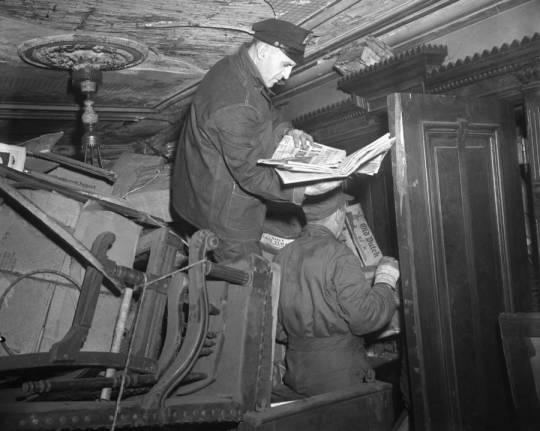
In 1933, Homer went blind from eye hemorrhages. His younger brother quit his job to care for him full-time, which is when their withdrawal from society began. Langley began keeping years of newspapers so his brother could read them when his sight was restored.
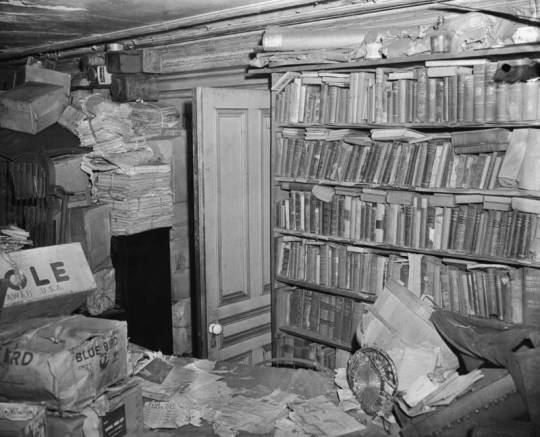
In the midst of the Great Depression, the brothers became increasingly fearful of their own neighborhood, which was shifting from the upper-class area they had known to an area synonymous with poverty and crime.

People became curious, local kids threw rocks at the windows, increasing their paranoia. Langley boarded up the windows, removed the doorbell and wired the doors shut.
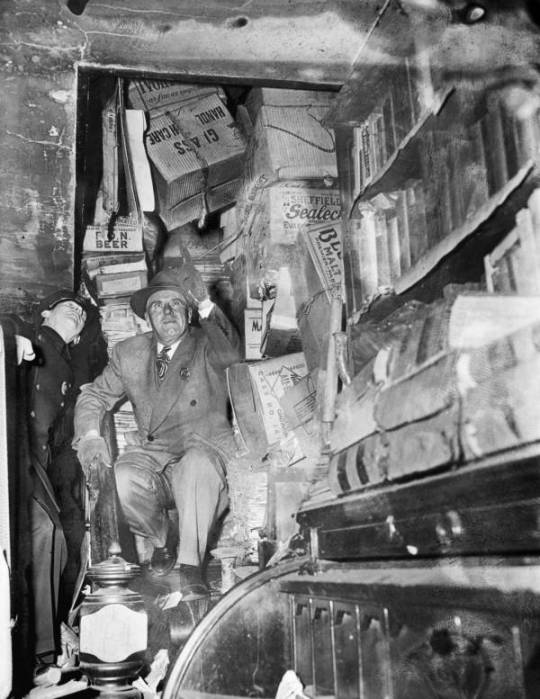
Several people attempted to burgle the home, which prompted Langley to construct booby traps and elaborate tunnel systems made of junk all around the house.
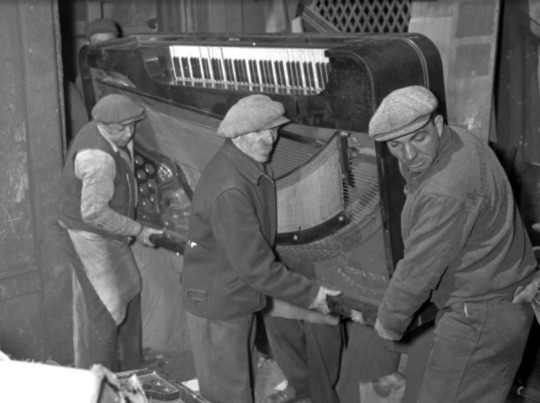
Langley ventured out only after midnight for food runs. He would collect countless unwanted and abandoned items on the street that caught his eye along the way.

When Homer became paralyzed due to rheumatism, the brothers refused to seek medical treatment. Even though their father was a Dr., they didn’t trust them. Instead, they decided to use their fathers medical library in the house.

Langley believed his brother’s sight could be restored with a diet high in vitamin C so he fed Homer 100 oranges a week. He adapted a Model T Ford to generate electricity after their power was cut off, along with their water and gas, due to unpaid bills.

When the bank came to evict them, police found Langley in a clearing he had made in the walls of junk. Without a word, he wrote a check for the equivalent of nearly $100,000 today to pay off the mortgage and ordered everyone off the property.

The next time authorities returned, it would be to search for the bodies of the Collyers. To enter the sealed brownstone, an officer broke a window on the second floor and climbed through.

Unable to get past the solid walls of junk, a squad of men began making their way through the debris by throwing out everything blocking their way onto the street. The spectacle drew a crowd of thousands.

After several hours, they found Homer’s body. Medical examiners later determined he had died of starvation and heart disease.
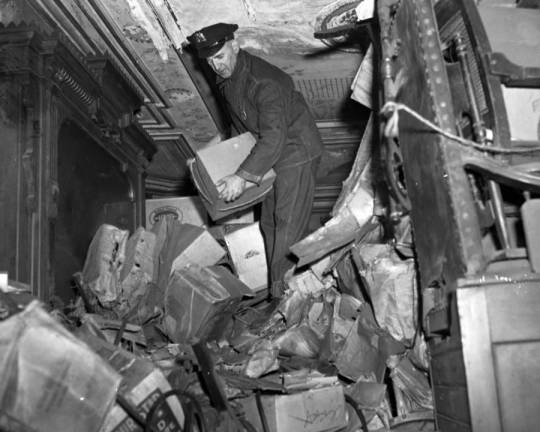
When they couldn’t find Langley, they thought he fled and launched a search. Finally, a workman found his decomposing body. He was buried in one of his 2ft. wide tunnels lined with rusty bed springs and a chest of drawers. He had died of asphyxiation after he accidentally tripped one of the booby traps and was crushed. Police believe that he was bringing food to his brother.

The house was deemed an unsafe fire hazard and was razed later that month in 1947. Some of their stuff went to museums and the rest was sold at auction. Since the 1960s, the site of the former Collyer house has been a pocket park, named for them.
messynesschic.com
461 notes
·
View notes
Text
Whether you're a student, a journalist, or a business professional, knowing how to do high-quality research and writing using trustworthy data and sources, without giving in to the temptation of AI or ChatGPT, is a skill worth developing.
As I detail in my book Writing That Gets Noticed, locating credible databases and sources and accurately vetting information can be the difference between turning a story around quickly or getting stuck with outdated information.
For example, several years ago the editor of Parents.com asked for a hot-take reaction to country singer Carrie Underwood saying that, because she was 35, she had missed her chance at having another baby. Since I had written about getting pregnant in my forties, I knew that as long as I updated my facts and figures, and included supportive and relevant peer-reviewed research, I could pull off this story. And I did.
The story ran later that day, and it led to other assignments. Here are some tips I’ve learned that you should consider mastering before you turn to automated tools like generative AI to handle your writing work for you.
Find Statistics From Primary Sources
Identify experts, peer-reviewed research study authors, and sources who can speak with authority—and ideally, offer easily understood sound bites or statistics on the topic of your work. Great sources include professors at major universities and media spokespeople at associations and organizations.
For example, writer and author William Dameron pinned his recent essay in HuffPost Personal around a statistic from the American Heart Association on how LGBTQ people experience higher rates of heart disease based on discrimination. Although he first found the link in a secondary source (an article in The New York Times), he made sure that he checked the primary source: the original study that the American Heart Association gleaned the statistic from. He verified the information, as should any writer, because anytime a statistic is cited in a secondary source, errors can be introduced.
Dive Into Databases
Jen Malia, author of The Infinity Rainbow Club series of children’s books (whom I recently interviewed on my podcast), recently wrote a piece about dinosaur-bone hunting for Business Insider, which she covers in her book Violet and the Jurassic Land Exhibit.
After a visit to the Carnegie Museum of Natural History in Pittsburgh, Pennsylvania, Malia, whose books are set in Philadelphia, found multiple resources online and on the museum site that gave her the history of the Bone Wars, information on the exhibits she saw, and the scientific names of the dinosaurs she was inspired by. She also used the Library of Congress’ website, which offers digital collections and links to the Library of Congress Newspaper Collection.
Malia is a fan of searching for additional resources and citable documents with Google Scholar. “If I find that a secondary source mentions a newspaper article, I’m going to go to the original newspaper article, instead of just stopping there and quoting,” she says.
Your local public library is a great source of free information, journals, and databases (even ones that generally require a subscription and include embargoed research). For example, your search should include everything from health databases (Sage Journals, Scopus, PubMed) to databases for academic sources and journalism (American Periodical Series Online, Statista, Academic Search Premier) and databases for news, trends, market research, and polls (the Harris Poll, Pew Research Center, Newsbank, ProPublica).
Even if you find a study or paper that you can’t access in one of those databases, consider reaching out to the study’s lead author or researcher. In many cases, they’re happy to discuss their work and may even share the study with you directly and offer to talk about their research.
Get a Good Filtering System
For journalist Paulette Perhach’s article on ADHD in The New York Times, she used Epic Research to see “dual team studies.” That's when two independent teams address the same topic or question, and ideally come to the same conclusions. She recommends locating research and experts via key associations for your topic. She also likes searching via Google Scholar but advises filtering it for studies and research in recent years to avoid using old data. She suggests keeping your links and research organized. “Always be ready to be peer-reviewed yourself,” Perhach says.
When you are looking for information for a story or project, you might be inclined to start with a regular Google search. But keep in mind that the internet is full of false information, and websites that look trustworthy can sometimes turn out to be businesses or companies with a vested interest in you taking their word as objective fact without additional scrutiny. Regardless of your writing project, unreliable or biased sources are a great way to torpedo your work—and any hope of future work.
For Accuracy, Go to the Government
Author Bobbi Rebell researched her book Launching Financial Grownups using the IRS’ website. “I might say that you can contribute a certain amount to a 401K, but it might be outdated because those numbers are always changing, and it’s important to be accurate,” she says. “AI and ChatGPT can be great for idea generation,” says Rebell, “but you have to be careful. If you are using an article someone was quoted in, you don’t know if they were misquoted or quoted out of context.”
If you use AI and ChatGPT for sourcing, you not only risk introducing errors, you risk introducing plagiarism—there is a reason OpenAI, the company behind ChatGPT, is being sued for downloading information from all those books.
Historically, the Loudest Isn’t the Best
Audrey Clare Farley, who writes historical nonfiction, has used a plethora of sites for historical research, including Women Also Know History, which allows searches by expertise or area of study, and JSTOR, a digital library database that offers a number of free downloads a month. She also uses Chronicling America, a project from the Library of Congress which gathers old newspapers to show how a historical event was reported, and Newspapers.com (which you can access via free trial but requires a subscription after seven days).
When it comes to finding experts, Farley cautions against choosing the loudest voices on social media platforms. “They might not necessarily be the most authoritative. I vet them by checking if they have a history of publication on the topic, and/or educational credentials.”
When vetting an expert, look for these red flags:
You can’t find their work published or cited anywhere.
They were published in an obscure journal.
Their research is funded by a company, not a university, or they are the spokesperson for the company they are doing research for. (This makes them a public relations vehicle and not an appropriate source for journalism.)
And finally, the best endings for virtually any writing, whether it’s an essay, a research paper, an academic report, or a piece of investigative journalism, circle back to the beginning of the piece, and show your reader the transformation or the journey the piece has presented in perspective.
As always, your goal should be strong writing supported by research that makes an impact without cutting corners. Only then can you explore tools that might make the job a little easier, for instance by generating subheads or discovering a concept you might be missing—because then you'll have the experience and skills to see whether it's harming or helping your work.
18 notes
·
View notes
Text
ANDREW CARNEGIE
As Americans, this is a name we have all come to recognize. Carnegie was an incredibly successful industrialist and philanthropist in the late 19th century and early 20th century.

He was born in Dunfermline, Scotland but his family moved to Pittsburgh, Pennsylvania when he was a child. He built Pittsburgh's Carnegie Steel Company which he sold to J.P. Morgan for a whopping $300 mill ($10 bill today).
His biggest contributions came after he sold his steel company. He believed that the rich had a duty to improve society so he focused his efforts on building local libraries, world peace, education, and scientific research. He are some of the buildings he funded or had built:
Carnegie Hall

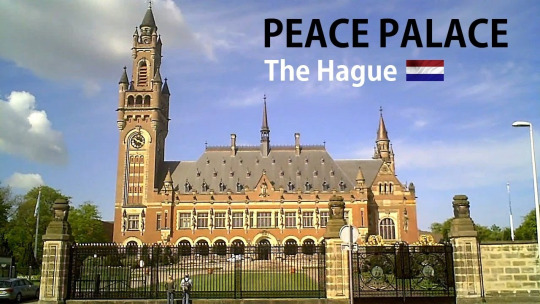

Carnegie Institute of Science

Carnegie Mellon University
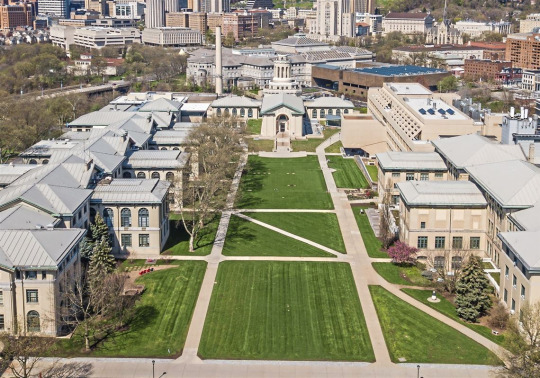
Carnegie Museums
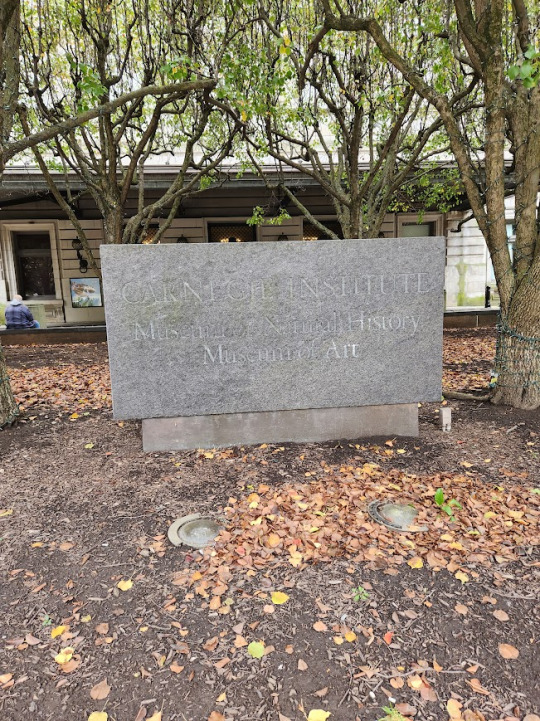
Carnegie was fascinated with dinosaurs. He actually funded the digs at Dinosaur National Monument (yes, that place exists thanks to him).
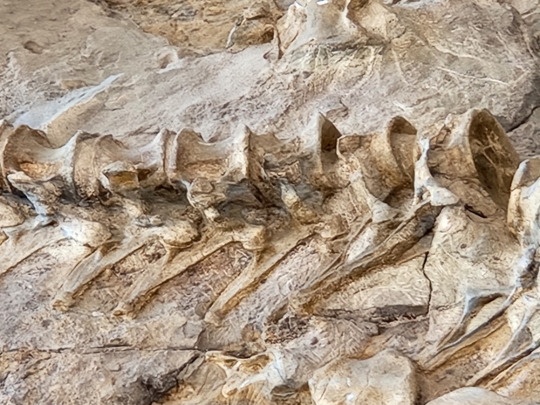
He was especially proud of Dippy, the first Diplodocus ever discovered.
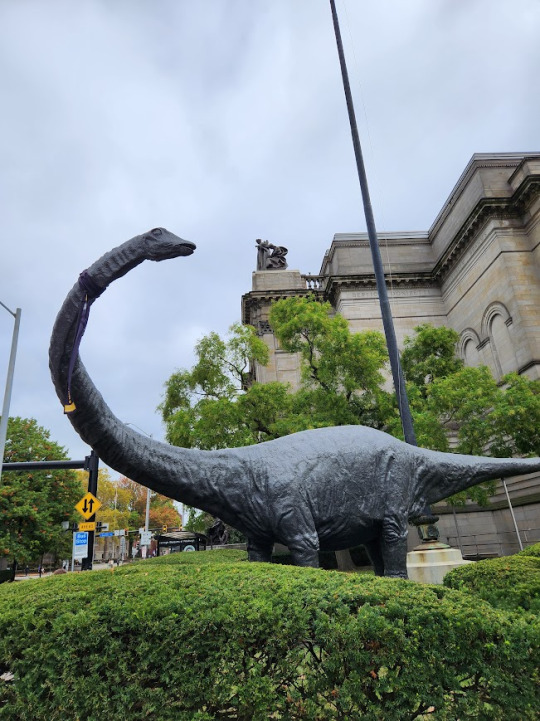
The species name was actually named for him (Diplodocus carnegii) and the full skeleton stands in Dinosaur Hall today at the Carnegie Museum of Natural History. Carngie had several copies of the skeleton made and shipped to other museums in South America and Europe.

Carnegie donated over $250,000 to paleontology for "collecting, preparing and studying dinosaur and other vertebrate fossils." If only we had as generous a wealthy benefactor for our site. That is the dream.
While Diplodocus was the most famous dinosaur connected to Carnegie, there was one other fairly famous dinosaur connected to him. You've probably heard of this guy:

The American Museum of Natural History in New York sold the skeleton to Carnegie during WWII when they thought in would be bombed by the Germans. The skeleton has stood in Carnegie's museum ever since.
#paleontology#dinosaur#fossils#fun facts#dinosaur national monument#andrew carnegie#history#pittsburgh pa#carnegie museum of natural history
8 notes
·
View notes
Text
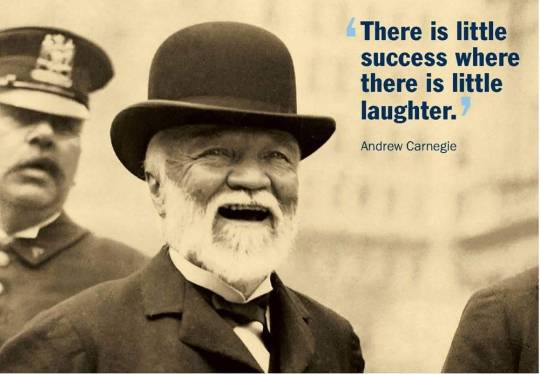
On November 25 1835 the steel magnate and philanthropist, Andrew Carnegie, was born in Dunfermline.
Carnegie's name is synonymous with big business and large-scale philanthropic endeavour. Andrew Carnegie was the son of a poor weaver from Dunfermline who amassed the largest fortune ever seen before his death in 1919.
It was from the small harbour in the Fife coastal village of Charlestown that the young Carnegie left Scotland along with his family in 1848. His father, William, a handloom weaver from Dunfermline, decided to relocate to Allegheny, Pennsylvania, in the hope of a better life.
Carnegie was a ruthless and gifted businessman. By 1899 his companies controlled 25 per of American steel production at a time when demand for the building material was growing at unprededented rates. The subsequent almagmalation in 1901 of the four big American steel companies made Carnegie the richest man in the world, and allowed him to give away more $350 million dollars - half a billion in toda
y’s money - in his lifetime.
Carnegie famously wrote that “the man who dies rich dies disgraced”. He further elaborated his theory of philanthropy, known as the Carnegie dictum. It called for individuals to spend the first third of one’s life getting all the education one can, to then spend the next third making all the money one can, and finally to spend the last third giving it all away for worthwhile causes.
Towns across the UK and Ireland benefited from public libraries paid for by Carnegie and his charitable trusts. Among the other institutions founded in his name is New York’s famous Carnegie Hall, a venue considered to be among the most prestigious in the world. A more modest venue with the same name stands in his home town Dunfermline, allowing generations of less well-known performers and local school children to claim that they too have performed at Carnegie Hall.
The remains of a dinosaur - Diplodocus carnegiei - were named after the philanthropist in 1901. He sponsored an expedition led by John Bell Hatcher which found the near complete skeleton in in the Morrison Formation in Utah. Carnegie paid for casts of the dinosaur to be displayed at museums around the world
The inscription on Andrew Carnegie’s gravestone reads: “Here lies a man who knew how to enlist the service of better men than himself.” He was buried at Sleepy Hollow Cemetery in North Tarrytown, New York.
11 notes
·
View notes
Text



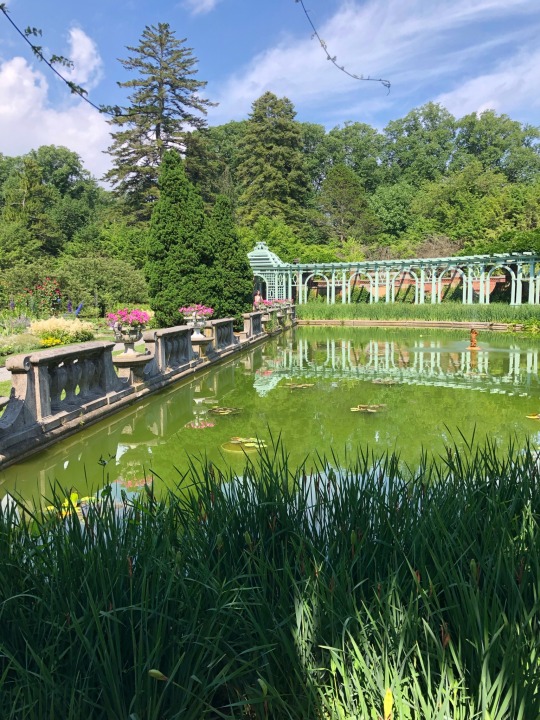

OLD WESTBURY GARDENS
If you’re asking me, Old Westbury Gardens is probably one of the “Big Long Island Three”, the other two being Planting Fields Arboretum and Vanderbilt. “The Big Long Island Three” being old “Gatsby” estates that have been turned into gardens or preserves that like EVERYONE knows about and has been to at least once.
💰 : winter rates are $8/adult, FREE if you reserve through the Long Island library museum pass program
⏰ : hours (and I think fees) vary by season, check the wesbite
🌎 : 71 Old Westbury Road, Old Westbury, Long Island
♿️ : honestly, the website claims to be technically handicapped accessible, but it's really not - they could do better
🏃♀️ : beginner, this place is meant for a casual stroll
🐶 : service animals only, no pets
🚗 : ample parking on site
📸 : HIGH Instagramability
📍: ancestral land of the Matinecock peoples.
Ironically though, I’ve actually only been to Old Westbury Gardens ONCE. Listen, I am a student right now and those tickets are just too expensive for my taste (although you can reserve them and get in for FREEEEE through your local library if you live on LI). I don’t understand how OWG doesn’t qualify as a botanical garden like NYBG or Brooklyn Botanical. Why is it just a regular “garden”? It’s legit just as impressive and beautiful and manicured as the big botanical gardens in the area, in my opinion. But, as per usual, I digress…
Old Westbury Gardens has been featured in so many tv shows and movies and was what Baz Luhrman used as inspiration for his ridiculous adaptation of The Great Gatsby with Leo DiCaprio (can we tell I hated that movie?). It’s truly a gorgeous and impeccably well-preserved early 1900s era Gold Coast mansion and the grounds are this bizarre garden oasis in an otherwise very busy section of Long Island suburbia.
HISTORY:
The estate was owned by the Phipps family, who gained their wealth through their association with Andrew Carnegie (of Carnegie Hall) and the Carnegie Steel Company, and upon research, it actually looks like the Phipps who built the mansion, also sponsored Amelia Earhart’s ill-fated flight across the Atlantic, which I thought was interesting and random enough to include. Anyway.. The Phipps family moved in and lived there as early as 1906 but the estate was converted into a museum and gardens in the 1950s and has served that purpose ever since.
The house and grounds have been used for movies like Hitch, Cruel Intentions, American Gangster and shows like Gossip Girl. It’s been used so thoroughly because every nook and cranny of Old Westbury Gardens is meticulously designed and planned and gorgeous. Even the entrance through the MASSIVE iron gates and the thin, tree-lined driveway demands drama, demands your attention and then you pull through and see the mansion from the distance and you can’t help but be genuinely awed.

TRAIL RECOMMENDATION:
I DO and I DON'T have a specific trail recommendation. As this will NOT be the only post about OWG, the sort-of-recommendation is forthcoming in the next post, so watch this space!
I don't really have a specific recommendation because you should just attempt to experience every inch of this place. The walled gardens were really stunning. I would like to go back when the lilacs are really in season because I think that would be pretty spectacular but they make sure there is something pretty much year round, even in the winter, when they do light displays.
If I were made of money, or library reservations for free tickets, I would go legitimately every couple of weeks between March and September because there is that much to see and that much is often in bloom between the GIGANTIC rhododendron bushes in the front of the mansion to the rose garden in the back, something is always blooming and beautiful.
I wish Old Westbury Gardens wasn’t so expensive (or I wasn't so poor.. lol). You can tell why it is though because of how well it is maintained. I highly recommend taking advantage of the free tickets through Long Island libraries if you live locally, and I recommend going at least once in general regardless of the price. It's worth it.
This, despite the admissions fee, makes my “Run, Don’t Walk” list because it’s truly a magnificent experience.

P.S. Something unusual but occasional...
NEARBY FOOD RECOMMENDATIONS:
I’d also like to give a quick shout out to two of my favorite area restaurants if you’re looking for some food to eat after your long walk through the gardens.
Hildebrandt’s in Williston Park, just a few miles west; it’s an old ice cream shoppe from the 1920s that has remained in business by sheer will of force and local love and also because it has the greatest French onion soup and ice cream you’ll ever have in your entire life. I'd bet my life on it.
Spuntino in Westbury, near Roosevelt Field Mall, which is like a little Italian tapas and wine bar. They have great happy hour deals at the bar and literally the most incredible pepperoni personal pizza (picante) you’ve ever had.
These are OBVIOUSLY not sponsored posts, I just really love both restaurants and who doesn’t like a good food recommendation?
#long island ny#longisland#long island#longislandny#long island photography#old westbury gardens#old westbury#westbury#new york history#new york#new york by a new yorker#liny#cathikesny#newyork#parks#adventure#garden#flower#flowers#botanical garden#long island history#discover long island#hildebrandts#spuntino#williston park
4 notes
·
View notes
Text

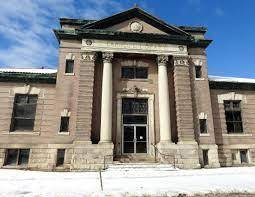

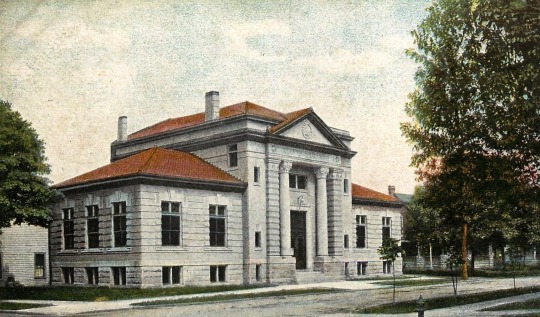
Coshocton Carnegie Library
213 N. 4th St.
Coshocton, OH 43812
Coshocton’s Carnegie Library is located on the corner of 4th Street and Chestnut Street in Coshocton, Ohio. The Coshocton Library Association started in 1872 as a subscription library. Over the years, it evolved into a free public library. The trustees of the Coshocton Free School Library solicited a grant from Andrew Carnegie, a businessman and philanthropist from Pittsburgh, in 1902. A total of 2,509 Carnegie libraries were built between 1883 and 1929, including some belonging to public and university library systems. This included 1,689 in the U.S. with others around the world. Carnegie agreed, and a lot was chosen at Chestnut and 4th Streets. This was the 1000th library to be built with Carnegie funds. Completed in 1904, it was designed by E.W. Hart of Columbus, and is constructed of granite-colored pressed brick, with a red tile roof. The main level was originally home to the book collection, while the upper floor was designed as an auditorium and the basement was used for various meeting rooms.
After an unsuccessful attempt to pass a bond issue to build a new, larger library in the 1950s, the Coshocton library eventually moved in 1973. Its current home is in an old post office building on Main Street. The city sold the old library building in 1980 after it was determined that it would not be financially feasible to renovate the structure as a new city hall. Meanwhile, the old Carnegie building, described in Centennial History of Coshocton County by William J. Bahmer as “splendidly arranged for the purpose used,” sits vacant and unmaintained across the street from the county courthouse. Although the city has made attempts to purchase the building from the current owner, they have been unsuccessful.
However, in 2021, the City of Coshocton was looking to partner with Our Town Coshocton to breathe life into a historical building vacant for more than 50 years. Our Town is a non-profit organization dedicated to preserving, revitalizing and promoting historic Coshocton County with a particular focus on Main Street and downtown. Mayor Mark Mills detailed a tour he took of the old Carnegie Library building and had conversations with attorneys of the family who owns the building. The hope is that Our Town can take control of structure and return to it to community use through purchase or donation. The plans are not that the city take possession of it, but ultimately Our Town receives the building and makes it a little, miniature history museum for the City of Coshocton. Mills said such a museum could include exhibits related to specialty advertising art, mining, industrial heritage and other local history.
0 notes
Text
Castleford Museum
Did you know that Castleford was originally a Roman fort and settlement? Well, the town is home to a wealth of treasures, rich history, and fascinating stories. A visit to Castleford Museum is a wonderful journey itself wherein you get to discover why the area was a great and important meeting place for Bronze Age people.
You can see a unique and special Iron Age chariot and explore objects from Roman Castleford while learning interesting things about marbles, rugby, mining, pottery, and glass. The newly renovated space also features four incredibly special changing displays with content created in partnership with local groups and people.
The early life of Henry Moore, an English artist, best known for his semi-abstract monumental bronze sculptures is illustrated in the local studies area including his sculpture Working Model for Draped Reclining Figure. It also includes the Castleford Sketchbook by his school friend Albert Wainwright which records many of the places that Moore would have been familiar with while living in the town during the 1920s.
Want to make your trip more fun? Then dress up in armour and discover Castleford’s rich Roman heritage. Explore your own creativity in regular free crafts sessions. The main Museum is located on the top floor of the original 1905 Carnegie Library and entry is free.
Address: Carlton St, Castleford WF10 1BB
Opening Hours
Sun and Wed Closed
Mon – Fri 09:30 – 17:00
Sat 09:30 – 16:00
Transport Links:
The museum is a 7-minute walk from Castleford Bus Station and a 5-minute walk (0.3mile) from Castleford Railway Station.
By Car and Coach:
Easily accessible from the M62 via Junction 32 along the A639 / A6539. Use WF10 1BB in your sat nav. Get directions with Google Maps.
Parking:
The nearest car park can be found at Aire Street car park at WF10 1JL.
A place for fun, imagination and play, Castleford Museum is just an 8-minute drive away from Hotel Castleford. Become a member and explore Castleford with us. Enjoy exclusive discounts on local attractions, restaurants, bars, and popular places in the town. Write to us at [email protected] to learn more.
0 notes
Text
My bsu library

MY BSU LIBRARY FULL
MY BSU LIBRARY PASSWORD
Institute of Museum and Library Services, administered by the Indiana State Library. Information in the Catalog Addenda supersedes the published version of this catalog. Muncie Civic Theatre program : My Fair Lady Muncie Civic Theatre Program : My Sister Eileen This project is made possible by a grant from the U.S. The Addenda should be used in conjunction with the 2021-2022 Bridgewater State University Catalog. For the most up-to-date catalog information, including changes or corrections to curriculum, course descriptions, and tuition and fees, see the BSU Catalog 2021-2022 Addenda. The Architecture and Science-Health Science Libraries offer specialized resources for their disciplines, and all three.
MY BSU LIBRARY FULL
In all cases, students bear ultimate responsibility for reading the catalog and the Student Handbook and following the policies, rules, requirements and regulations of the university. Located at the center of campus, Bracken Library is the perfect place for study and researchit's full of group and individual study rooms, staffed with librarians ready to assist you, and features hundreds of public workstations featuring the software needed for coursework. Additionally, all enrolled students are expected to read and be familiar with the content of the Student Handbook. Students should read and understand the rules, requirements and policies described in the catalog. Whenever it does so, the university will give as much advance notice as it considers feasible or appropriate, but it reserves the right in all cases to do so without notice. Whether noted elsewhere in this catalog or not, the university reserves the right to change, eliminate, and add to any existing (and to introduce additional) rules, regulations, policies, fees and other charges, courses of study and academic requirements that appear in this catalog, in the Student Handbook or on its website or otherwise. R. The rules, regulations, policies, fees and other charges, courses of study, and academic requirements that appear in this catalog were in effect at the time of its publication. Civil War Resources from the Muncie Public Library - Local History & Genealogy Carnegie Library digital collection includes an issue of the The Guardian of Liberty newspaper from July 16, 1868, a Grand Army of the Republic (G. This catalog is an official publication of Bridgewater State University. Then press the Logon to ILL/DDS button to continue.
MY BSU LIBRARY PASSWORD
This 2021-2022 Bridgewater State University Catalog outlines programs of study. Maxwell Library Interlibrary Loan & Document Delivery Services(ILL/DDS) Enter your BSU username and password below. HELP Undergraduate/Graduate Catalog 2021-2022 Undergraduate/Graduate Catalog 2021-2022

0 notes
Text
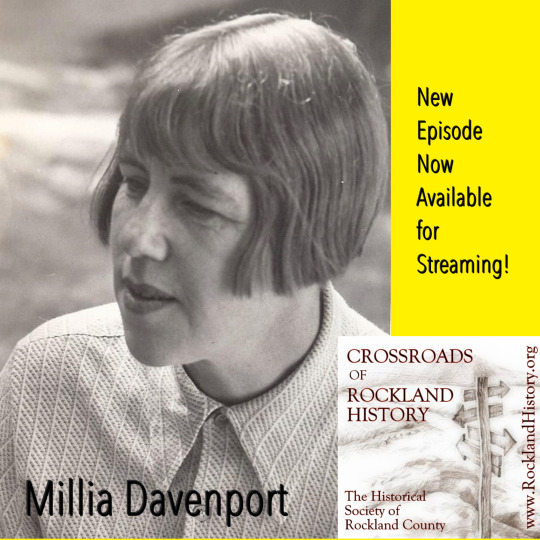
#ICYMI The new episode of Crossroads of Rockland History is now available for streaming. Listen at the link below or on all major podcast platforms!
____________________________
Episode originally aired on Monday, June 20, 2022, at 9:30am, on WRCR 1700AM
We turned our attention to the life and legacy of Millia Davenport. David Bisaha, Assistant Professor of Theater at SUNY Binghamton joined host Clare Sheridan to discuss this remarkable and trailblazing woman who lived most of her life in Rockland County. Among her many contributions include writing the definitive book of theatrical costume history, The Book of Costume. Published in 1948, it remains the gold standard. (Royalties from the book were donated to the New City Library.)
Born in Cambridge, Massachusetts, on March 31, 1895, to Charles B. and Gertrude Crotty Davenport, Millia Davenport lived in New City for more than 70 years. Her father and mother were biology teachers at Harvard and Radcliffe, respectively. They were genetic researchers and helped establish the Station for Experimental Evolution of the Carnegie Institute of Washington in Cold Spring Harbor, NY.
After attending Barnard and Parsons, Millia Davenport created artwork for and edited The Quill, a literary magazine. Later, she became one of the first female scenic design painters in America. She worked as a costume designer for a number of Broadway theater companies, including Maxwell Anderson's Playwrights Company and Orson Welles's Mercury Theater.
In 1981, she received an honorary doctorate in fine arts from the Parsons School of Design in Manhattan the same year that she received the highest honor given by the United States Institute for Theatre Technology for a lifetime of distinguished contribution to the performing arts. In 1991 the Costume Society of America established the Millia Davenport Publication Award recognizing excellence in costume scholarship.
Davenport died in 1992.
David Bisaha is a scholar and practitioner who studies performance design, theatrical space and architecture, and the history of theatrical creativity. He is an Assistant Professor in the Department of Theater at SUNY Binghamton. He specializes in the history of scenic design in the United States, mostly in the first half of the twentieth century, and in the more recent history of immersive and participatory performance. His other research interests include theatre historiography, cognitive sciences and performance, directing theory, and memory studies.
Bisaha’s current book project, American Scenic Design and Freelance Professionalism, is a cultural labor history of scenic designers and designing in the United States. At Binghamton, Bisaha teaches theater and performance history, dramaturgy, and theater theory in the MA and BA programs. He is the Curator of the Theatre Collection of the Department of Theatre, and is affiliate faculty and a steering committee member of the Material and Visual Worlds Transdisciplinary Area of Excellence (TAE). The Millia Davenport papers are housed there.
***
Crossroads of Rockland History, a program of the Historical Society of Rockland County, airs on the third Monday of each month at 9:30 am, right after the morning show, on WRCR Radio 1700 AM and www.WRCR.com. Join host Clare Sheridan as we explore, celebrate, and learn about our local history, with different topics and guest speakers every month. We are pleased to announce that we have begun loading our archived podcasts to all major Podcast platforms.
The Historical Society of Rockland County is a nonprofit educational institution and principal repository for original documents and artifacts relating to Rockland County. Its headquarters are a four-acre site featuring a history museum and the 1832 Jacob Blauvelt House in New City, New York.
www.RocklandHistory.org
#rocklandhistory#womenshistory#nyshistory#millia davenport#bookofcostume#costume design#set design#south mountain road#SoundCloud
0 notes
Text
Helenvale Street, Parkhead Housing Association
Helenvale Street, Parkhead Housing Association, Glasgow Homes, Building News, New Scottish Architecture, Scotland
Helenvale Street, Parkhead, Glasgow
19 May 2022
Design: anderson bell + christie
Location: Parkhead, East Glasgow, Scotland
Photos: Keith Hunter
Helenvale Street for Parkhead Housing Association
anderson bell + christie were appointed by Parkhead Housing Association to develop proposals for a residential development on a currently derelict site in the Parkhead area of Glasgow. The scheme sits a stone’s throw from Parkhead Cross and to the rear of Parkhead Library; funded by Andrew Carnegie and completed in 1906 to designs by James R. Rhind, the B-listed Parkhead Libary remains a prominent local landmark.
The library stands resolute on the corner of Tollcross road and Helenvale street. Helenvale street sits at a prominent location in the development of the Parkhead area. Although undeveloped until the mid 19th Century, Parkhead Cross is identifiable as early as the 18th Century.
As such Helenvale Street contains the remnants of prominent moments in the History of Parkhead and remains a active part of the area today, running north-south, linking Parkhead Cross to London Road.
The scheme comprises 24 flats for social rent; providing a mix of 1-bed 2-person flats, 1-bed 2-person accessible flats and 2-bed 4-person flats. The aim from the outset has been to provide a considered response that takes cognisance of surrounding buildings and street networks, specifically the site’s unique position adjacent to Parkhead Library, to ensure this development positively contributes to the wider area.
The blocks aim to establish a street front and permanence that learns from the robust tenement frontages throughout Parkhead adopting a simple, durable palette appropriate for the robust sandstone context.
The tenemental forms complete the block as formed by Parkhead Library and Parkhead Washhouse, visually picking up on some of the key features of the Library and Washouse, particulary their depth, scale and materiality.
The block is then broken down to marry with the more prosaic forms of architecture which are regenerating the remainder of the street, with a second block standing as a pavilion in the landscape. This has had the added benefit of maximising aspect for prospective tenants, ensuring good supervision over the landscaped area and encouraging it’s safe regular use.
The primary building material is simple brick chosen to weather well and fit into the character of the area, defined by the varying red, blonde and grey sandstone, with two tones to differentiate layers in the façade.
Helenvale Street, Parkhead Housing Association, Glasgow, Scotland images / information received 180522 from anderson bell christie architects
Location: Helenvale St, Parkhead, east Glasgow, Scotland
Glasgow Architecture
Contemporary Architecture in the Glasgow Area
Share your views on Cumbernauld Town Centre
photo courtesy of HES
Cumbernauld Town Centre public consultation
Magnet Glasgow Office Building
Magnet Glasgow Building
Paisley Museum Building, south west Glasgow
Design: AL_A
image courtesy of architects office
Paisley Museum Renewal
Hawkhead Centre, Paisley
Design: Page \ Park Architects
photo : Keith Hunter
Hawkhead Centre in Paisley
The Custom House, Greenock
photo © mcateer photograph
Custom House Greenock Building
Architecture in Scotland
Contemporary Architecture in Scotland
Scottish Architecture Designs – chronological list
Scottish Architecture News – recent selection below:
Health and Wellbeing Centre, Edinburgh, south east Scotland
Design: Page\Park Architects
photo : Keith Hunter
University of Edinburgh Health and Wellbeing Centre
Scottish Architect
Comments / photos for the Helenvale Street, Parkhead Housing Association, Glasgow building design by anderson bell christie + architects page welcome
The post Helenvale Street, Parkhead Housing Association appeared first on e-architect.
0 notes
Text
Warmer Springs and Earlier Birds
by Bonnie McGill
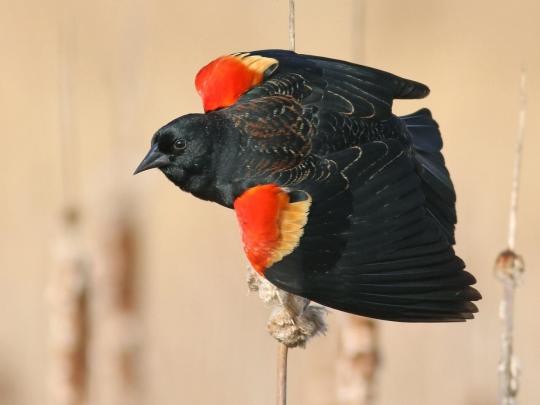
Male Red-winged Blackbird (Agelaius phoeniceus) by Jonathan Eckerson via Macaulay Library.
Male Red-winged Blackbirds! For me, their calls and bright red shoulders are one of the signs that spring is really here. Mind you, this is no subtle sign of spring that takes an expert naturalist to notice. No, this is a sign of spring that slaps you across the face, as if spring is calling, “I’m here! CONK-A-REE! Look at me!” Next time you drive past a wetland area with cattails, there is a good chance you’ll see one or more showing off their red shoulders (the brown females are beautiful too). Red-winged Blackbirds have been back in western PA and announcing their territorial claims since March. Whether you live in the country or the city, bird watching is a great way to observe the change in seasons and connect with the nature around you (and in you).
As a member of the Climate and Rural Systems Partnership (CRSP) team I’ve been gathering evidence-based stories of how climate change is impacting natural processes in western PA. Since this week is the City Nature Challenge, folks might be paying closer attention to birds, creating an opportunity for museum scientists to explain what migratory songbirds in our region can teach us about climate change.
Since 1961 scientists at the museum’s Powdermill Avian Research Center (PARC) in Pennsylvania’s Laurel Highlands have been monitoring birds. In that time they have captured, studied, marked, and released almost 800,000 birds! This week, for example, PARC’s mist nets are temporarily capturing birds like the Common Yellowthroat, Yellow Warbler, House Wren, Ruby-throated Hummingbird, American Redstart, and Wood Thrush.
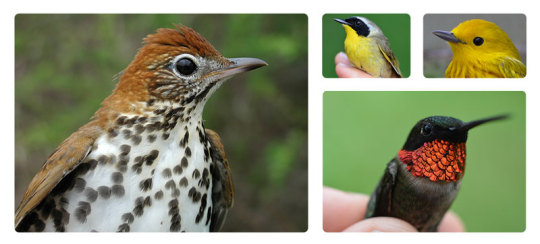
Migratory birds that are part of the PARC long term dataset (clockwise from left): Wood Thrush, Common Yellowthroat, Yellow Warbler, and Ruby-throated Hummingbird. All of these species are breeding earlier in the year in response to climate change that has already occured. Photos courtesy of Powdermill Avian Research Center.
All of these species are migratory--spending the winter in the southern US, the Caribbean, Central America, and/or South America. Many fly across the Gulf of Mexico (!) on their way north in the spring. All of these birds share another trait--they are nesting earlier in the year than they once did. We will follow the Wood Thrush as an example of how many birds are responding to the warming climate.

The artwork in this blog post is by the author and part of an infographic depicting the information written here.
PARC’s unique 50 year dataset allows scientists to study how birds respond to long term changes, including the warming climate. Average April temperatures in the Laurel Highlands have already increased by two degrees Fahrenheit since the 1960s, and are projected to warm by another four to five degrees Fahrenheit by 2050. Warmer springs trigger earlier plant budburst. Insects, especially caterpillars, feast on buds and young leaves, which have less toxins than mature leaves. Caterpillars are the breakfast of champions (among birds). So, migratory songbirds, including the Wood Thrush, need to synchronize their northward movement with the budburst. This means an earlier arrival, according to the calendar, at points all along their migration route.
Wood Thrushes arrive from Central America five days earlier than they did in the 1960s. Research suggests that migratory birds respond to temperature cues along their migration route and speed up (warmer temperatures) or slow down (cooler temperatures). Birds may be responding to temperature directly or indirectly via other temperature-dependent cues such as wind speed and direction and spring leaf out.

Early arrival is not the only adjustment Wood Thrushes are making, however. The birds are also making their nests and hatching young earlier. Wood Thrushes are nesting 22 days earlier than they did in the 1960s. All four of the bird species in the photo above are breeding earlier. Within the web of organisms that supplies food for birds, May 19 of the present feels like June 11 of the 1960s. The earlier nesting in response to a warming climate means birds that normally hatch and rear multiple broods per breeding season, such as House Wrens and Northern Cardinals, may have greater reproductive capacity. PARC research shows that Gray Catbirds and Northern Cardinals are having more young in warmer springs, but other multi-brood species such as House Wrens and Common Yellowthroats are not.
While birds seem to be keeping pace with climate change now, they may not be able to in the future. Their capacity to adjust migratory and reproductive behavioral traits in response to climate change is finite. Also, we’ve already lost an estimated 3 billion North American birds since 1970 due to factors including habitat loss, insect declines, pesticide use, and predation by domestic cats. Now climate change is making bird survival even more difficult. The capacity of bird populations to evolve in response to climate change is also limited -- climate change in the Anthropocene is happening much more rapidly than climate change in past epochs, many times faster than evolution can keep up. The good news is we can help birds, ecosystems, and ourselves by taking action to reduce the severity of climate change.

Here are three ways individuals and communities can help birds by mitigating climate change:
1) Conserve habitat: Habitats like forests, wetlands, and prairies provide food and shelter for birds while the plants and soils remove and store carbon away from the atmosphere. These habitats are needed throughout birds’ migratory ranges. Create habitat by reducing lawns and planting native plants. For example, many birds enjoy eating the fruits of spicebush, elderberry, and black cherry, which are native to western Pennsylvania. You can find more bird-friendly plants native to your area at https://www.audubon.org/plantsforbirds.
2) Renewable energy: A just transition to renewable energy sources like properly-sited wind* and solar will reduce greenhouse gas emissions, provide local jobs, improve air quality, and help protect birds and people from climate change. *The National Audubon Society supports properly-sited wind energy.
3) Eat your vegetables: A more plant-based diet is an impactful way to reduce greenhouse gas footprints. Also, choosing food that is grown with less pesticides, and using less pesticides in the stewardship of your garden, helps support the survival of insects that are food for birds. Reductions in demand for pesticides also reduces their manufacture, which further reduces greenhouse gas emissions. Learn more from Project Drawdown.
So get out there, find the signs of spring that are gentle (Trout Lilies) and not-so-gentle (Red-winged Blackbirds), log them in iNaturalist for the City Nature Challenge, and talk with your family and your community about how you can implement one or two (or three!) of the actions suggested above!
You can also read this as an infographic here.
Thank you to the many folks who helped with the development of this blog post and infographic: Luke DeGroote, Mary Shidell, and Annie Lindsay at PARC; the Laurel Highlands network of the Climate and Rural Systems Partnership; Nicole Heller; Taiji Nelson; and Sarah Crawford.
Bonnie McGill, Ph.D. is a science communication fellow for the Climate and Rural Systems Partnership and based in the Anthropocene Studies Section at Carnegie Museum of Natural History. Museum employees are encouraged to blog about their unique experiences and knowledge gained from working at the museum.
93 notes
·
View notes
Text
Nancy Drew and Education
So apparently the Clue Crew is full of teachers? Who knew. Well, as a former homeschooled student, current teacher, and (hopefully) future homeschooling parent/teacher I have been planning on integrating the games into lessons for a long time. Below the cut I have just a few of my many ideas (some more fleshed out than others). Feel free to use, adapt, or add your own!
SCK:
- Braille
o How blind/vision impaired people navigate the world
§ How we can make it more accessible for them
o How do braille books and printers work
- ASL
o Memorizing the alphabet and basic signs
§ Build up fluency
o How HOH/deaf people navigate the world
§ How we can make it more accessible for them
o Connections of ASL to other signed languages
§ French Sign Language versus British Sign Language
- Dangers of gas leaks
o What to do if you smell or hear gas
- Inequalities between mens and womens sporting opportunities
o See Women’s Soccer
- What are performance enhancing drugs
o What is the difference between #steroids and the steroids your doctor might prescribe
- How drug running is a gateway crime
- Why blackmailing people isn’t good
- More reasons to never move to Florida
- Why you shouldn’t go to an actual high school part one
STFD:
- Television in NYC
o Soap Operas
o How television sets work
o Role of director
o Teleprompters
o Props
o Agents
- Theatre in NY
o Broadway
§ Learn a show
o Carnegie Hall
- Dangers in the ways we obsess over celebrities
o Paparazzi
o Stalkers
o Respecting privacy
- NY taxi system
- NY regional accents
- NY as a center for immigration – salad bowl
o Ellis Island
- History of NYC
o Geography of NYC
- Typewriters
- Towers of Hanoi
- Encoding
- How to make chocolates (with or without poison)
- Read along:
o New York the Novel (Edward Rutherford)
o The Power Broker
o All of a Kind Family
MHM:
- San Francisco Gold Rush
- Earthquake and Fires in San Fran
- Golden Gate Bridge
- Angel Island
o Asian (Chinese) Immigration to the USA
- Chinese Zodiac
- Fortune telling (and why it’s not okay)
- Bed and Breakfasts
- San Francisco today
o Technology boom
o Overpriced everything
§ How this hurts established residents
§ Homelessness in San Fran
- Bandits in the American West
- Hauntings in American buildings
- How to remove and install tile
- Renovations – refurbish something
- Antiques
o Visit an antique shop
- Importance of fire safety
- How to install lighting fixtures properly
- How to fix a dumbwaiter
o How not to be a dumb waiter
- Tangrams
- What is the Victorian period
o Significance of Queen Victoria
- Read Along:
o Little Brother
o Paper Son: Lee’s Journey to America
o Angel Island Gateway to Golden Mountain
TRT:
- The French Revolution
o Marie Antoinette
o Women and the French Revolution
o Worldwide effects of the Revolution
o Historians of the French Revolution
- Writing history
o How we can focus on different events in history, how we can be sympathetic to certain people, how we can fulfill different spaces in the historical narrative, criticism of history as a field, entering history as a field
- Wisconsin Dairy industry
- Alarm systems and how they work
- Fingerprinting
- Elevator safety
- Ski lifts
o Skiing
- Vandalism
- Taking care of libraries
- Latitude and longitude
- Keeping records of good events and bad events
o Nothing you do will ever stop me from loving you
- Some people keep different sleep schedules
- Journalism
- Making translations
- Why France has different holidays – to keep the ski lodges from getting too full
FIN:
- History of theatre spaces
- Use of film at theatres
- Magicians
o Houdini
o Learn a ‘magic’ trick
- Library of Congress
- Demolition – wrecking balls
o What’s involved
- Plaster casts
- Historic register of buildings
o Visit a local historic building
- Price of concessions and movie tickets today
- Nickelodeons
- Celebrity stunts for attention from press
o Celebrity endorsements
- Jazz music
o Dancing
- Kidnapping stories
o What to do if someone tries to grab you
- Rubber vs. electricity
- Art/artists of the 20s
SSH:
- Numbering systems (particularly ones not based on 10)
- Cultures of South America
o Maya
§ Cultural understandings
§ Connections to what appears at Beech Hill
o Aztec
o Inca
- Myths of lesser civilizations because of European preconceptions
- Why do countries have consulates/embassies in other countries
- What is amnesia and other medical memory issues
- Provenance and why its important part one
- Roles and responsibilities within a museum
o Visit a museum
o How to be critical of a museum and how knowledge is presented to you
- Modern art
o Make your own
o Visit a modern art museum
- Periodic Table of Elements
- Positive and negative molds for casting
DOG:
- Prohibition
o Speakeasys
o Amendments to constitution
o Drinking age restrictions
§ Comparison of USA to European countries
o Connections to modern drug policies
- Recognizing and photographing local birds
- Dangers in the forest – ticks and other pests
- Why water sources are important
o Flint water crisis
- Visit a state park
o Importance of maintaining public land
- Alcatraz
- How to care for dogs
- Noise pollution
o Light pollution
CAR:
- History of carousels
o Visit a carousel
- Lathes
- Harmonicas
- Band organs
- Writing messages with lemon juice and other hidden inks
- How to iron
o How not to iron
- How to make a sundae
- How amusement park rides are designed
- Soldering
- What is parole
o Welcoming those who have been in prison back to society
o Problems with the American prison system
§ How it disproportionately affects minority groups
o What can be done in prison reform
o Abuses in prison
o Making mental and spiritual help and guidance more available
o Making sanitary products available
o Prison for profit hurts everybody except the prison owner
o Educational opportunities for those in prison
o More half-way help
o Juvenile sentencing reform – more out of system help
o Respecting humanity of prisoners
o Ending the death penalty
- Depression
o How to get help
o How to help others
o Dealing with loss
DDI:
- Native peoples of the Pacific Northwest
- Orcas and other whales
o Whaling industry in Northwest and Northeast
o Things whale products were used for
o Visit natural history museum with whale exhibition
- Visit an aquarium with a good reputation
o Problems with places that do not take care of their sea life – particularly large sea life like whales
- What is a chowder and how is it made
o Try or make chowder
- Crabs
o Restrictions on different types of crabs – what type is local
o Try a crab dish
- Importance of different knots
o Get some rope and learn how to tie different knots
- Know the NATO alphabet and letter flags
- Boating knowledge
o Go on a boating trip – know the port and starboard sides
- Learn how to kayak
- Try to learn how to skip rocks
- Visit a lighthouse
o Importance and histories of lighthouses
- Smuggling – what is it and why does it happen
- Shanghaiing
- Chess
SHA:
- The continuous oppression and mistreatment of Native Americans
o From Mayflower to Pocahontas to Trail of Tears to Dakota to DAPL to Reservations to food deserts to voting rights to much much more
§ How to support current Native voices and concerns
o Why Native Americans are not a costume
o “Possession” of Native American objects and land
§ Arrowheads and native jewelry
o Broad overview of regional Native American groups – using their own voices
§ Special focus on local Native American groups
· Is there a local museum/educational resource that is either Native created or known for respecting Native voices
o Current Native Americans of note (ex: politicians, activists, artists)
o While the previous focuses on Native Americans in the modern day USA – also discuss First Nations from Canada and Native Groups from more southern areas
- Why temperature and pan matters when baking (show what happens in the oven when it goes wrong)
- Magnets and how different metals react differently to magnets
- How to take care of a horse and other farm animals
o Visit a local farm
o Try horse-riding
- Dangers of rattle snakes and scorpions
- Lassos and how to use them
- Legends of outlaws in the American West
- Ghost towns
- Flower stitches when knitting/crocheting
- Petrified wood
- How to make a campfire
- Picking fruits and veggies when they are ready
- Flower language
- Read Along:
o Native American folk tales
o Motorcycles and Sweetgrass
o Gone Away Lake
o Black Beauty?
CUR:
- Where are the moors
- Different regional accents within the United Kingdom
- British foods
- Latin
o Learn fun phrases and prayers
- Ancestry and genealogy
o Map your own family tree and recognize family crests
o How adoption has historically been a binding and irrefutable concept for lineage
o Find places your family lived
o Leaving a history for your descendants
§ Write a story book for them
o British Royal Family
§ Why incest is bad
- Parrots and their intelligence
- Secret passages in old buildings
- Alchemy
o Connections to modern understandings of science
o Historical understandings of elements
- Astrological signs
- Witch trials
- Legends of lycanthropy and other monsters
- Importance of not taking other peoples medicines
- Runic alphabet
- Feeding your pets a healthy diet
- Typing practice
- How to embrace the idea that home taught students are evil geniuses
- Forges and melting points of different metals
- Carnivorous plants
- Succulents
- Constellations in different places
- Read Along:
o The Secret Garden
o The London Eye Mystery
o Beastly
CLK:
- Great Depression
o Causes and effects
o Who was hurt
o Who was not hurt
o Areas of America
§ Dust bowl
o Famous people and literature
o Homelessness and poverty
§ Bread lines
§ Soup kitchens
§ Anti-homelessness architecture
§ Connections to mental illness and veterans
§ How we can help those who do not have homes today
- Early Telephones
- Shakespeare
- History of Nancy Drew
o Mildred Wirt Benson
o Edward Stratemeyer
- Fishing – why different fish respond to different bait
- Orphanages in the early 20th century
- Gas prices and accessibility of cars through time
- How to make pie
- What is jurisdiction and what is significant about crossing state lines
- How do banks work
o Safety deposit boxes
- Identify theft
- How to use a sewing machine
o Sew an item of clothing
- Mini golf – why and what
- Mirrors and their usefulness
- Stamp collections
-
- Radios and call signs
o Comparison to modern internet forms
- Telegrams
- Read along:
o Shakespeare
§ Midsummer Night’s Dream
§ Others
o Pollyanna
o Rebecca of Sunnybrook Farm
o The Grapes of Wrath
TRN:
- Trains
o Steam trains
o Visit a train museum
o Take a train ride (if not a normal event)
o Importance of transcontinental railway
o Trains around the USA today
o Trains around the world (TGV, bullet train)
- Abraham Lincoln
- Mark Twain
- How to make a good burger (you leave off the PB&J)
- Slugs
- Periodic Table of Elements – abbreviations
- Gemstones
- History of Mining
o England (Newcastle upon Tyne)
o American West
o Appalachia
o Company Store
o Health issues for miners
o Danger of mines
o Current issues for mining
- Dancing the Hurley Burley
- People who collect creepy dolls
o History of porcelain dolls
- Embroidery
o How to
o Patterns/symbols
- General Stores in the American West
o Sears
- How to make taffy
- Find a well maintained and beautiful tomb and research who is entombed
- Focusing light through a magnifying glass can start a fire
- Read Along:
o Murder on the Orient Express
o Mark Twain books
DAN:
- All lessons in French
- How using different ingredients and different amounts of ingredients can affect the outcome of your cookies
- Paris métro
o History
o How to read/follow a métro map
o RER
- Montmartre and other Parisian neighbourhoods
- History of Île de la France and Square de Vert Galant Parc and Pont Neuf
- WWII and the French Resistance
o Cross of Lorraine
o Vichy France
o Abuses of the French gov’t in this period
- Paris and the fashion world
- Beauty standards and the rejection of natural beauty by society
o Dangers of weight and figure standards
o You are beautiful as you are
- Catacombs of Paris
- Famous French Dishes (from this region)
o Or Bretagne since I know and like them better
- The French Café
- Moulin in France
- Tea and how hot leaf water can taste so bad but still be good for you
- Buildings of Baron Haussmann
- Paris History
- Decoders
- Importance of vitraux historically, culturally, and religiously
- Read Along:
o Little Kids
§ Madeline
§ Babar
§ Petit Ours
§ Plume
o High School
§ Hunchback of Notre Dame
§ Les Mis
§ Dale Van Kley
CRE:
- History of Hawai’i and her native people
o How the USA screwed them over and continues to do so
§ Land colonizing today
o Listen to voices from Native Peoples
- Pearl Harbor
o USS Arizona
- Native myths and legends
- Local flora and fauna
- Surfing
- How to make bead necklaces
- Snorkeling
- Entomology
o Find some local bugs and identify and observe them
- Horticulture
o See if you can graft something
o Watch a carnation placed in water with food dye
o Regrow a fruit or veggie from the leftovers
- Go looking for seashells – see how many complete shells you can find
- Be aware of pesticides and the dangers they offer
o Dangers of organic food too
- Make something with pineapple in it
- Fishing – different kinds of native fish
- Volcanos
- Hula
ICE:
- Wolf sanctuaries – respecting wildlife and their place in the wild and not the domestic
o What to do if you see a wolf in the real world
- Fur trapping in Canada history
- Regions and Capitols of Canada
o Visit Canada?
- How the Canadian government works
- Use of French language in Canada
o Unique features of Canadian French
- Ice fishing
- How to cook omelets, salmon, etc.
o How to not add paprika cause like ew
- Fossils
- Radiation
o Marie Curie
- How to be a good maid
- Snowballs/ice balls
- Ice skating
- Winter weather safety
- Avalanches
- Saunas
- Birthmarks
- Fax machines
- How to not lie about bird watching
- Frozen water safety
- Modern offenses against First Nations by Canadian Government
CRY:
- Culture of the Arawak and Caraïbe
o Voodoo
- Mardi Gras in New Orleans
- Hurricane Katrina and aftermath
- French Influence
- Eyes and their parts and functions
- Teeth and their parts and functions
- Alligators in the Southern USA and how they are dangerous pests
- Graveyards/cemeteries and how to be comfortable in them
o Modern burial practices
o Why are they above ground in Louisiana?
o Places where they are running out of space for the dead
o Historic violations of final resting places
- Ventriloquism
- Lizards and how to care for them
- Rube Goldberg machines
- Curio shops
- Crystal Skulls
VEN:
- International crime
- Organized crime
- Scopa
- Italian basics
o Learn an Italian aria
- Italian food
o Not just spaghetti
- History of Venice
o Current issues in Venice
- Carrier pigeons
- Micro-dots
- “Observing the architecture”
- Try to make gelato (or just get gelato, either way you get gelato)
- Disguising yourself – put on an outfit and try to get me to not recognize you
- Picking locks
- Secret codes
- Solfege
o With hand signs
o Learn a song in solfege
- Carnivale
- Learn how the sausage gets made
o How to deal with food poisoning
- How to secure your living space against burglars
o Glass breaks, motion sensors, keypads, magnets, and more
- Read Along:
o Heist Society
o The Prince
o Merchant of Venice
HAU:
- Irish lessons (as much of this in Irish as possible)
o Why the Irish language is important
- Geography of Ireland
o Provinces and counties
- Irish names
- Why Ireland has disliked and should dislike the UK
o Historically
o Famine
§ Emmigration
o Easter Rising
o Troubles
o Present-Day
- Importance of alcohol in Ireland
o Uisce beatha
o Guinness
§ Guinness world records
- Irish music
o Irish instruments
o Learn some Rebel songs
- Ogham runes
- Irish foods
o Something with lamb, who cares what
- Don’t use friends for land development
- Bogs
- Chemical Reactions
- Rockets
- Inventions and secrecy during WWII
- Religion in Ireland
o Pagan traditions
o Christianity
o Catholic/Protestant tensions
- Irish wedding traditions
- How printing presses work
- Irish castles
- Sheep sheering/raising sheep
- Irish legends
o Fae
o Leprechauns
- Don’t drive and talk on the phone
RAN:
- Why blackface is problematic? (the fact that this needs to be said is problematic in and of itself)
- Scuba diving
- Sailing
- Bermuda Triangle
- Bats
- Primates and their intelligence
o Problems with animal research
o Koko
o Jane Goodall
- Island resort culture
- Metal detectors
- Pirates
o And the Caribbean
o Their abuses
o Different kinds
o Modern day pirates
- How do walkie-talkies work
- US mistreatment of island territories
- Read Along:
o Bloody Jack (Meyer)
WAC:
- Edgar Allan Poe
o Stories
o Baltimore
- Piano
- Victorian Dining traditions
o How to set a place for fancy dining
o How to fold napkins
o Table manners
o How to serve someone at a fancy dinner
o How courses might work
o How to use your silverware
- Why you shouldn’t go to an actual high school part two
o Just fyi – that’s not how uniforms work
§ Have a school inspired dress code for a week
- Bullying and why you absolutely will not be a bully
o How to respond to bullying
o Importance of talking to adults and counseling
- Logic puzzles
- Research the founding of a local school
- Stringed Instruments
- Plagiarism
o Turnitin
- Making sandwiches – like a good deli style sandwich
- Photography scavenger hunt – make a digital (or physical) yearbook
- Squirrels
- Orthographic projection
- DNA/RNA
- Saving every major project on three different thumb drives
- Getting along with roommates
- States and Capitals
o Countries and capitals of the world
TOT:
- Tornados
o Technology used to observe tornados
- Meteorology
- Prairie dogs
- Life on the great plains
- Great Plains Native Americans
- Small towns in the Midwest honestly be like that
- Defensive driving
- Make a disaster kit
- Know what to do in various natural emergency situations
o What is the local alert protocol
o What do local authorities recommend
- How to maintain and fix a car
- How to fix a broken device
- What is tenure
- How to budget
o Go to the grocery store on a strict budget (however much you come in under budget is your candy budget)
- Read Along:
o Little House
SAW:
- Basic Japanese phrases
o Learn to count
o Writing in Japanese
- Sudoku, nonograms, renograms
- Japanese ghost legends
- Japanese culture
o Tourism
§ Ryokans
o Space – everything small
o Politeness/formalities
o Hot springs/baths
o Tatami and paper walls
- Japanese cultural dress
o Kimonos
o Lolita? Fashion
- Japanese names
o Last name first
o How to address others in Japan
- Martial Arts
o Ninjutsu
§ Traditional tools
- Japanese tea ceremony
- Schools in Japan
- Teaching English as a foreign language
- Japanese subway/train system
- Pachinko and Japanese gaming
- Japanese vending machines
- Robotic animals
- Bento
- Japanese foods
- Origami
- How to fake a haunting
CAP:
- Basic German phrases
o How to make a German word
o Connections of German to English
- German food favourites
o Especially cakes
- Storytelling as a cultural entity
o How memory has worked differently in different times
- Glass blowing
- How castles provided for the local community
- Bavaria in Germany
o Cultural dress
- Glockenspiel
- How to make board games
- Monster stories of central Europe
- How to monitor security camera remotely
- Read Along:
o Heidi
ASH:
- Arson
o Watching how different accelerants burn a piece of paper
- All politicians are at least somewhat self-serving
o But write a letter to a local politician anyway
§ Different ways to contact elected officials, and why some don’t work
- How to make ice cream
- How a police investigation works
o Problems with police departments around the world – specifically USA
o Ways that police work unfairly targets minorities
§ If Nancy is innocent how many others are
- How to use matches and lighters safely
- Why you should not return to the scene of a crime – particularly a fire
- Making sure smoke detectors work properly and the system is connected
o We might not go to school but fire drills are still important
- What is a mass spectrometer
- Who to call if you’ve been arrested
- What to do if you get pulled over
- How the media can skew the truth and make their own narratives
- Sound mixing
- Be careful with what you say/post/record
o Keep receipts and clarify when possible
TMB:
- What not to do at an archaeological site
- Ancient Egyptian History
o Pantheon, notable figures, relevant events
o Pyramids, sphinx
o Pharaohs
- Modern Egypt
o Arabic alphabet
- History of archaeological digs in Egypt
o Why they’ve been problematic
- Dangers of the tombs
- Mummys
o How they are put together
- Tomb raiders
- Importance of water in the desert
- How to piece together a broken artifact
- How to gently brush off an artifact
- There is no such thing as a dictionary for ancient Egyptian
- Aliens did not build the pyramids
- Senet
- Desert life safety
- How mirrors can be used to light a room
- Read Along
o Rick Riordan
DED:
- Nikola Tesla
o All his fun stuff
o Tesla Coils
- 3-D printing
- Gummy fingerprints
- Faraday Cage
- Basic electric concepts
o How to build a circuit board
- Chemical safety
- How a lab might work
- Valuing different skills within academia
- Ultraviolet light
- How motorcycles work
- Freelance photography
- How to use academic databases
GTH:
- Slavery in the United States
o Origins
o ‘End’
o Civil War
o The connection to “southern culture”
o Continued abuses of Black people in America
§ Importance of recognizing Black voices and what they are saying
§ Listening even when it’s uncomfortable
§ Checking privilege when you have it
o Jim Crow Laws
- Plantations
- Gone With the Wind
o The good and the bad
- Civil War spies – female
- Carbon monoxide poisoning
- Burned out houses are not a safe space
- Do not go digging through people’s coffins – rest in PEACE
- Understanding that your family can be flawed
- If you don’t want to get married, if you’re not happy in a relationship, end it
- When a member of your family is sick you take care of them
- Make a will, just in case your cousin kills you
- Bachelor and bachelorette parties should feature activities that everyone is comfortable with
- Read Along:
o My Last Skirt: The Story of Jennie Hodgers, Union Soldier
SPY:
- Scotland and their identity
o Celtic Nations
o Independent Scotland
o Call a Scottish person
- Unicorns and other mythical creatures in Scotland
- Scottish food
o The appetizing parts
- History of spies
- Biowarfare
o Code Orange
o Other teenage stories dealing with anthrax
o Current events and concerns
o Historical biowarfare (smallpox blankets)
- Ziplining
- Archery
- How to bug someone
- Tartans and plaids
o Kilts
- Augmented Reality Glasses
- Record players
- How to reset a circuit breaker
- Read Along:
o Gallagher Girls
o Code Orange
o Little House (Martha)
o Little Brother (Doctorow)
MED:
- Don’t meet your heroes
- New Zealand
o Maori culture
- Survivor style game shows and realism
- I’m not saying Aliens can’t exist, I’m saying they def aren’t involved here
- Kayaking
- Submarines and what they can do
- Turtles
- Earthquakes
- Be careful with rope bridges
LIE:
- Provenance and why it’s important part two
- Greek art and how it was originally painted vibrantly
o Abuses of Greek art through the ages
- The British Museum and the issues with that
- Greek pantheon
o Legends and notable figures
o Religious traditions
- Iliad and Odyssey
- Art forgery
- How to fire clay pots and pottery
- Memorizing lines for a play
o Staging for a play
o Role of a director
- Theatre
o Lights
o Curtains
o Fly system
o Sound
- Greek alphabet
- Historical importance of the Greek language and culture
o Alexander the Great and Hellenization
- Olympics
o Historic and modern
- Greece and the European Union
- Make something with pomegranates
- Read Along:
o Iliad
o Odyssey
o The Thief
o Percy Jackson
SEA:
- Iceland
o Culture
§ Naming traditions
o Language
o Music
o Food
- Shipbuilding
o Historic and modern ships
- Ice caving
- Northern Lights
- Tides
- Snowmobiling
- Poetry
- What is xenophobia
MID:
- Some games just shouldn’t be made
- American witch trials
o What actually went down
o Misconceptions
- Treating people with albinism as real people
- Arson is bad
- Herbal remedies and how they can interfere with modern medicine
- Witchcraft and how not to
- Salem MA
- Ignorance promotes fear and hatred so we do our best to learn about others
37 notes
·
View notes
Quote
New York has always attracted the wealthy and predatory, dating back at least to our most famous pirate, Captain Kidd. Coming here was seen as a sort of arrival, for individuals and businesses alike. Long a “headquarters town,” as early as 1901 New York was home to sixty-nine of the nation’s two hundred largest corporations. Their owners lined Fifth Avenue with their fairy-tale mansions—some of them later converted into museums or elegant stores—or filled luxury apartment houses such as the Dakota. They hired the most renowned architects to erect gigantic advertisements for their transformative, world-conquering enterprises, including many of the most memorable structures ever built in the city: Grand Central Terminal; the Chrysler, Woolworth, Empire State, and Seagram buildings, among others. Noxious as the old robber barons could be, they at least dropped vast amounts of money into the local economy in the form of property taxes and purchases in elite shops. They employed people in droves—small armies of domestics, vendors, and workers at all levels—to service their needs and businesses. They contributed to the city through their building and philanthropy—Rockefeller Center, Carnegie Hall, the Morgan Library, and the Frick Collection, to name just a few examples.
The new rich infesting the city, by contrast, are barely here. They keep a low profile, often for good reason, and rarely stick around. They manufacture nothing and run nothing, for the most part, but live off fortunes either made by or purloined from other people—sometimes from entire nations. The New Yorker noted in 2016 that there is now a huge swath of Midtown Manhattan, from Fifth Avenue to Park Avenue, from 49th Street to 70th Street, where almost one apartment in three sits empty for at least ten months a year. New York today is not at home. Instead, it has joined London and Hong Kong as one of the most desirable cities in the world for “land banking,” where wealthy individuals from all over the planet scoop up prime real estate to hold as an investment, a pied-à-terre, a bolt-hole, a strongbox.
For most of a decade now, like lava flowing inexorably from some deadly volcano, the residences of the superrich have moved east from the Time Warner Center to create Billionaires’ Row, the array of buildings on 57th Street and several adjoining streets and avenues that is already dominating much of the Manhattan skyline. These “supertall” skyscrapers are defined as buildings taller than 984 feet: One57, at 157 West 57th Street (1,004 feet); 432 Park Avenue (1,396 feet). Well on their way to being built: 53 West 53rd Street (1,050 feet), 111 West 57th Street (1,428 feet), and 217 West 57th Street (1,550 feet). Finished or not, many of the apartments were—at first—snapped up as soon as they went on the market. The Times used to tick off their record-setting sales in its Sunday real estate section, down to the absurdly exact dollar and cent: one recent lower-end example, $47,782,186.53! Nor are the records these sales set likely to remain for long. A triplex at the forthcoming 220 Central Park South will reportedly be sold for $200 million, and a four-story apartment at the same address is priced to move at $250 million. These would be the largest home sales ever recorded anywhere in the United States.
Who spends this sort of money for an apartment? The buyers are listed as hedge fund managers, foreign and domestic; Russian oligarchs; Chinese apparel and airline magnates. And increasingly, to use a repeated Times term, a “mystery buyer,” often shielded by a limited liability company.
This is not the benevolent “gentrification” that Michael Bloomberg seemed to have had in mind but something more in the tradition of the king’s hunting preserves, from which local peasants were banned even if they were starving and the king was far away. Or, to use a more urgent analogy, these areas are now the dead zones of New York, much like the growing oxygen-depleted dead zones of our oceans and lakes, polluted with pesticide runoff and deadly algae blooms.
Kevin Baker
41 notes
·
View notes
Photo
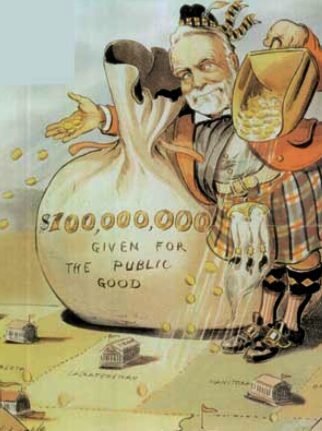



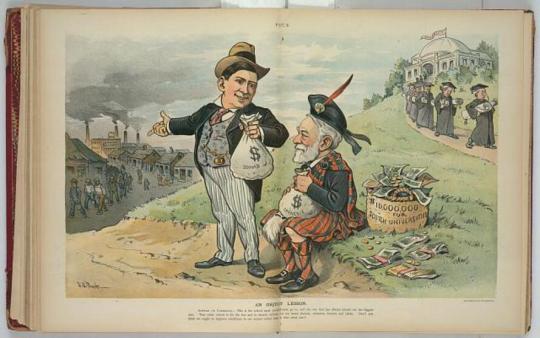

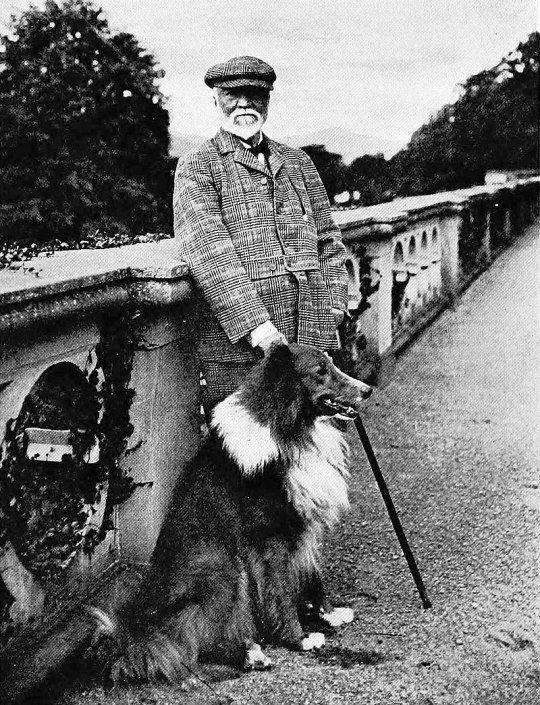
On August 11th 1919 Andrew Carnegie, the Dunfermline-born steel industrialist and philanthropist, died.
During the late 19th centuries, several entrepreneurs became famous due to their wealth and influence on society. Carnegie was mostly famous due to his reputation for philanthropy. I’ll focus on his philanthropy in this post.
Carnegie was born in the 25th of November, 1835 in Dunfermline, Scotland. The family was extremely poor. His father, William, was a hand-loom weaver and his mother, Margaret, repaired shoes. William refused to work in the local factories at the turn of the industrial revolution, which further devastated the family’s finances. Growing up, Carnegie was inspired by the commitment and hard work of his mother compared to his father, which she did in the name of providing a better future for her children. In fact, it was Margaret, who decided emigrated to America in 1848.
Carnegie’s uncle, George Lauder Sr., a political leader in Scotland deeply influence him as a boy by introducing him to the writings of Robert Burns and historical Scottish heroes such as Robert the Bruce, William Wallace and Rob Roy.
During his teen years, he was barred from entering the local library due to a new rule that declared that only patrons of the school could enter. He ended up writing a letter to the council and the newspapers, which resulted in opening all the libraries in Pittsburgh to the youth population. His love for libraries stretched on to his years of philanthropy where he established and funded
The first Carnegie library was built in Andrew Carnegie's hometown of Dunfermline, Scotland. It opened to the public in 1883 with Carnegie's "Let there be light" motto carved into the building's sandstone entrance, in total he helped fund and build a total of 2,509 libraries around the world, now tell me has any other person in history done anything like this?
He also established large pension funds for his former employees at Homestead and, in 1905, for American college professors.
It wasn’t all about libraries though, he had a lifelong appreciation of equality, social justice, and education, he established numerous foundations and related causes. This included the Carnegie Endowment for International Peace, Carnegie Institution of Science and the Carnegie-Mellon University. He further established the Carnegie Dunfermline Trust to enrich the lives of the population of his birth town Then where were the Carnegie Trust for the Universities of Scotland, Carnegie Hero Fund, and the Carnegie Museums of Pittsburgh, among others.
In 1911, he became a sympathetic benefactor to George Ellery Hale, who was trying to build the 100 inch Hooker Telescope at Mount Wilson, and donated an additional $10 million to the Carnegie Institution. He also gave a further $10 million in 1913 to endow the Carnegie United Kingdom Trust, which was a grant-making foundation. The trust is still going today as a Wellbeing charity, it’s headquarters are in Carnegie’s hometown,, Dunfermline.
Andrew Carnegie is known as the "Patron Saint of Librarie! he was also given the title The Man of Steel long before Clark Kent stole it off him as Superman. Although he spent the majority of his life in the U.S he never forgot his roots and visited Scotland, first in 1881 with his mother and family to lay the foundation stone of the “Carnegie library” in Dunfermline, the last photo is Carnegie at Skibo Castle, 1914, his patriotism for Scotland did not go unnoticed, another nickname he was given was "the Star-Spangled Scotsman."
In the U.S you will find at least 6 places named after him, they are Carnegie, Georgia Carnegie, Minnesota Carnegie, Oklahoma Carnegie, Pennsylvania Carnegie, Wisconsin Lake Carnegie (New Jersey), at Princeton University. New York also has The Carnegie Club, not to be outdone we in Scotland also have a Carnegie Club at Skibo Castle, a place he first visited in 1897, a year later he purchased the castle and its 28,000-acres for £85,000, but spent over 2 million pound transforming the estate into what he rightly termed 'Heaven on Earth'. At Skibo's heart lies the Carnegie Links, on the shores of the beautiful Dornoch Firth. The course is rated amongst the world's finest and played by some of the sport's best.
Skibo stayed with the Carnegie family until 1982.
Today, 103 years after his death 26 organizations worldwide still bear Carnegie's name. They carry on work in fields as diverse as art, education, international affairs, peace, and scientific research.
41 notes
·
View notes
Text
Alpine Garage Door Repair Cleburne Co.
Alpine Garage Door Repair Cleburne Co. has been serving Cleburne, Texas, and the entire Johnson County, Texas areas for over 10 years. Whether you require a full-service garage door repair or a replacement garage door, we have expert technicians to help you with all your garage door repair needs.
We are proud to serve the Cleburne, TX area. This city has a lot of great sites to explore. Make sure to visit the Big Bear Native American Museum, where you can learn about historic artifacts then hang out at the picnic area afterwards. There’s also the Layland Museum housed in the beautiful Carnegie Library. And fans of the iconic movie, Gone with the Wind, will enjoy the museum dedicated to it. For a wet adventure, book a day at Splash Station waterpark. And for a night out, enjoy the local dining and shopping options found only in Cleburne.
As a leading garage door company, we provide high-quality service to our customers. We use only the best garage door products and parts for our garage door repair, garage door installation, garage door opener repair, garage door spring replacement, commercial garage door repair, and garage door maintenance.
We are looking forward to serving you! Contact us today to learn more!
Business Website: https://alpine-garage-door-repair-cleburne.business.site/
Business Phone: +1(817)-641-2002
Business Address: 210 W Katherine P Raines Rd, Cleburne, TX 76033, United States
CID Link: https://maps.google.com/maps?cid=11479532286498906724
Share Link: https://goo.gl/maps/dR5H6RyvuCvbLGWk9
Driving Directions: https://goo.gl/maps/hrfHqsHjsVEoAMTL8
Blog Post: https://local.google.com/place?id=11479532286498906724&use=posts&lpsid=7461574508044184931
CID Link: https://maps.google.com/maps?cid=11479532286498906724
Share Link: https://goo.gl/maps/dR5H6RyvuCvbLGWk9
Driving Directions: https://goo.gl/maps/hrfHqsHjsVEoAMTL8
Blog Post: https://local.google.com/place?id=11479532286498906724&use=posts&lpsid=7461574508044184931
1 note
·
View note